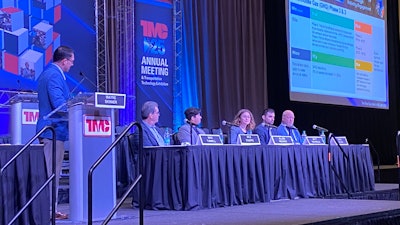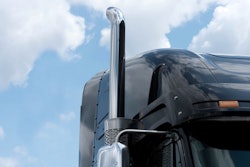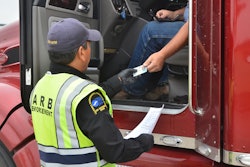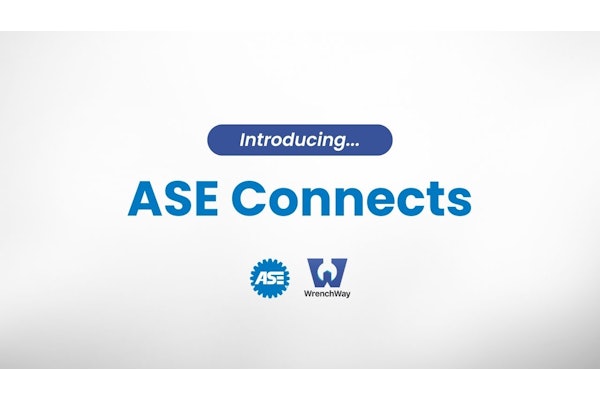
“This is the most crowded and uncertain regulatory landscape we as OEMs have ever worked with,” says Alissa Recker of Daimler Truck North America.
Speaking Tuesday during a panel discussion at ATA’s Technology & Maintenance Council (TMC) Annual Meeting in Nashville, Recker is referring to cluttered mix of EPA and California Air Resources Board (CARB) regulations currently implemented and forthcoming for California, its opt-in partner states and the trucking industry at large.
Recker adds trucking isn’t new to regulation. The EPA was founded in 1970. The first federal regulations for medium- and heavy-duty trucks were introduced in 1973. But other than the stumbles trucking experienced in implementing EPA 2010 regulations, the industry has reasonably been able to accept new regulations and deploy emission technologies at regular intervals without upending the marketplace.
That might not be the case anymore.
With CARB’s Advanced Clean Trucks and Clean Truck Check rules now in effect and the EPA’s Phase 3 GHG regulations for 2027 and beyond driving fuel economy standards to incredible lows, trucking is in the early days of what could be tenuous decade, or more, of regulatory-driven upheaval.
Barring swift and aggressive deregulation, trucking’s days of exclusively relying on diesel engines are numbered. Zero-emission vehicles (ZEV) are going to be required for carriers and manufacturers to remain in compliance with CARB and the EPA in the future.
Recker says the biggest driver of ZEV proliferation today is CARB’s Advanced Clean Trucks (ACT) rule. Originally written to operate in conjunction with the now sidelined Advanced Clean Fleets rule, Recker says ACT requires manufacturers to sell a growing percentage of ZEVs each year until becoming 100% committed to ZEV sales in 2036. Today the rule impacts six states (California, Massachusetts, New Jersey, New York, Oregon and Washington), but five more (Colorado, Maryland, New Mexico, Rhode Island and Vermont) have signed on in the next two years.
ACT and ACF were written and released together; the former would require OEMs to sell ZEVs and the latter would force fleets to purchase them. But with ACF no longer in effect, OEMs have been pushed into an unfortunate position where they must sell ZEVs into markets where demand and interest are nearly non-existent.
[RELATED: California dealers struggle to withstand CARB sales regulations, offer warning to opt-in states]
ACT compliance is measured by where trucks are registered, and Recker told TMC’s fleet attendees if they intend to buy and register a new truck in California or an opt-in state moving forward, they will be required to purchase a ZEV or number of ZEVs to earn credits to buy corresponding diesel tractors. Recker also notes that if a carrier purchases a diesel truck outside of California, it will be delivered with documentation on its MCO that indicates it cannot be registered in California.
 This chart from Tuesday's panel discussion shows how California and Federal regulations currently in operation or scheduled that will impact future truck purchasing decisions.
This chart from Tuesday's panel discussion shows how California and Federal regulations currently in operation or scheduled that will impact future truck purchasing decisions.
California Trucking Association’s Nick Chiappe also notes carriers and their OEM and dealer partners cannot use purchases of smaller trucks to earn credits for Class 8 tractors. Chiappe says CARB has touted its ZEV sales since ACT was implemented, but most units actually being sold in the state are Class 2b trucks and small medium-duty vehicles.
“For Class 7-8 trucks, there are only around 300 ZEVs in the state,” he says.
Matt Devirgilis with Penske Truck Leasing says his business has started purchasing ZEVs in due to the regulation and says for California operators, there’s currently no way around it. He recommends carriers in the state who might see a use case for ZEVs should look into the purchasing incentives to buy some, freeing up diesel sales for themselves or others.
“This is something where we all work together to meet this regulation,” he says.
[RELATED: Ohio Senator introduces bill to scrap EPA Phase 3]
The panel says EPA’s Phase 3 GHG regulations will operate similarly when it hits in 2027. ATA’s Mike Tunnell says prior EPA GHG regulations forced emission levels lower but were always attainable through internal combustion engine improvements. But Phase 3, as written, pushes emissions so far down that the only way industry will be able to achieve compliance will be to integrate ZEVs into the vehicle population.
“The only way to get there is through ZEVs,” he says.
But daunting as these regulations appear, the panel says it’s possible the Trump administration could step in and hit pause, shelving or delaying some of the more aggressive programs. Without ACF, Chiappe says “there’s going to have to be some movement from CARB to recognize the problem” of a sales mandate that lacks the backing of a purchase mandate.
And Recker notes new EPA Administrator Lee Zeldin has submitted CARB’s ACT, Low NOx Omnibus regulations to Congress for review under the Congressional Review Act. She says Congress acting on regulation has been uncommon, but if any of CARB’s regulations were to come to a vote, only a simple majority would be required to revoke a waiver. And if that happens, Recker says California would need to “develop substantially different regulations” to reapply for Federal approval.











